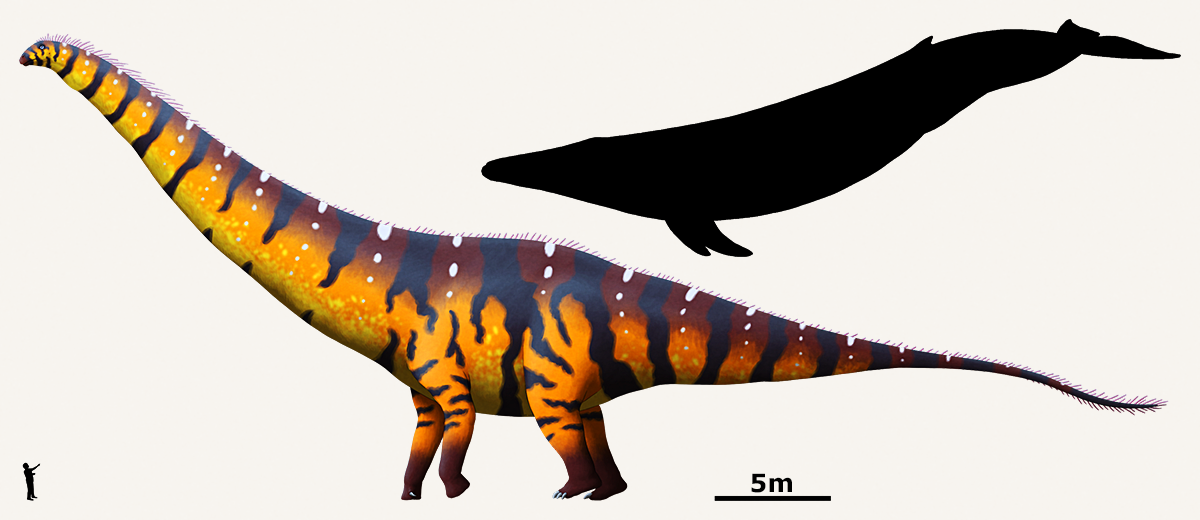In 1878, during the Bone Wars of American paleontology, Edward Drinker Cope published a description of a partial sauropod vertebra and femur from the Late Jurassic of Colorado (~150 mya). He classified it as a new species of the diplodocoid genus Amphicoelias (which he had named earlier that same year), designating it as Amphicoelias fragillimus in reference to the bone’s poor condition and incredibly fragile structure.
But what set this fragmentary find apart was its sheer size. The partial back vertebra measured around 1.5m tall (5′), with estimates of its full height anywhere up to 2.7m (8′10″) – twice the size of the same bone in Diplodocus, and far larger than anything else known.
Obviously its very difficult to accurately estimate the full body size of an animal from a single broken bone, but plenty of attempts have been made anyway, producing lengths of up to 60m (197′). For comparison, the largest living animal the blue whale reaches lengths of around 33m (108′).
Around the time of Cope’s death in 1897, his massive fossil collection was sent to the American Museum of Natural History, and the A. fragillimus vertebra was entered into their catalog–
Only to vanish, never to be seen again.
Multiple searches through the collection have found no trace of it, and there’s speculation that at some point the fragile bone may have crumbled entirely into pieces and been thrown away. No other material of A. fragillimus has ever been found in the ~140 years since its description, despite searches of the area where it was originally discovered, leading to claims of the entire specimen being a hoax – suggestions that Cope exaggerated or typoed his measurements in his rush to outdo his rival Othniel Charles Marsh.
Without that paleontological holy grail of finding the lost fossil or a new specimen, we just don’t know how big that bone truly was, or whether A. fragillimus was a living kaiju or a much more “normal-sized” sauropod. There’s even been some speculation of it being proportioned more like a rebbachisaur, with tall “sailback” vertebrae.
Except…
In a surprise plot twist, there is another.
An absolutely enormous neck vertebra hints at the existence of other gigantic mega-sauropods. We still don’t have enough remains to know what the heck was going on with these animals – how did they even manage to get so huge? were they rare individuals who lived long enough to grow into “super-adults”? – but the prospect of perhaps one day finally validating A. fragillimus’ enormous size is exciting.
My version of Amphicoelias fragillimus here works out to about 50m long (164′), although it might be closer to 60m long with a more horizontal neck posture. Its proportions are mainly based on a mixture of Diplodocus, Supersaurus, and Barosaurus, with slightly taller neural spines raising its back profile a bit and some big fat deposits thickening up its tail.

